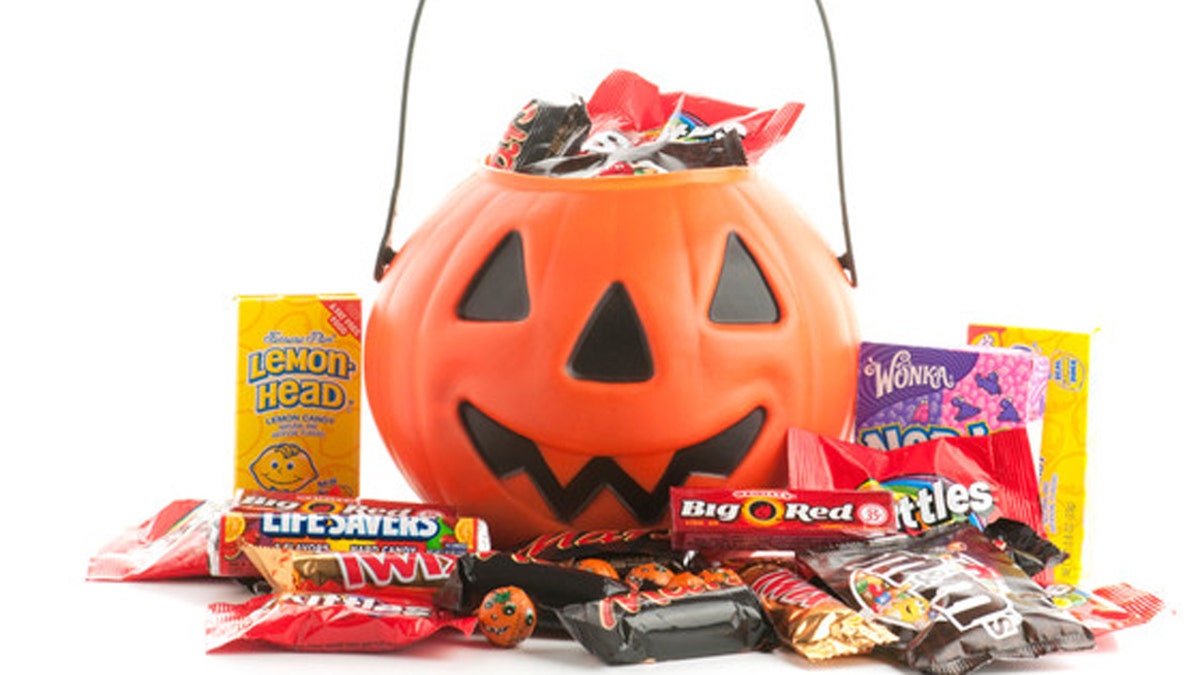
Five states chose candy corn as their favorites: Oregon, South Carolina, Tennessee, Texas, and Wyoming. (iStock)
If you think the ghosts and haunted houses of Halloween are scary, what about all that candy? Is it really necessary to have a holiday that celebrates all that sugar and the negative consequences that comes from it? We’re talking about real health issues like diabetes, obesity and tooth decay.
Compared to 20 years ago, Americans are consuming an average of 130 to 260 more calories a day – at the low end for adult women and the high end for teenage boys. If you do the math on unburned calories stored as fat, that’s the equivalent of 14 to 28 more pounds per person per year.
Sugar consumption has skyrocketed, and holidays like Halloween make it more difficult for people to monitor their intake and remain within the recommended guidelines. The fact is there’s nothing good about most candy. Sticky or chewy candies like Tootsie Rolls, laughy taffy, gummy worms and caramel-filled candies are treats no parent should give out and that no child should eat even in small quantities on Halloween or anytime of the year. They become easily lodged in the groves on the biting surfaces of teeth and are hard to remove which leads to tooth decay.
Find alternatives to candy. Halloween can still be plenty of fun without the dangers of tooth decay and obesity.
Then there’s sour candy. Here’s a wakeup call: Some candies’ pH levels are close to those of a car’s battery. The acidity in one piece of sour candy is enough to potentially start the tooth erosion process. Add that touch of sourness to a hard or chewy candy that can get stuck in the grooves in your teeth, and before you know it tooth enamel starts to disappear.
If you must handout or consume candy on Halloween, the first best option is sugar-free gum that is naturally sweetened with xylitol that won’t attract bacteria and plaque in the mouth and may actually help prevent cavities.
The next best choice is a non-sugary treat such as peanuts or popcorn.
The best bet: Find alternatives to candy. Halloween can still be plenty of fun without the dangers of tooth decay and obesity.
Instead of candy, consider giving out something non-edible such as pens, pencils or other school supplies. Or maybe a bottle of bubbles, bottle of water, a toothbrush, floss aids, coloring books, rubber balls or other small inexpensive toys.
If you find yourself totally unable to put it down, eat Halloween treats only after a meal and in small quantities. Many kids fill up on the overwhelming quantity of candy, leaving their bodies to run on sugar and empty calories. A burst of artificial energy is followed by fatigue and sluggishness. Always eat a balanced meal before indulging in candy. Remember: only small quantities of candy at a time because a little piece of candy packs a lot more sugar than you realize. And when you eat it frequently it really boosts your cavity proneness. If you do consume a lot of candy on Halloween, drink water with fluoride to help prevent cavities from forming. The additional water swishing through your mouth might help remove some sticky substances that stick to your teeth.
If there’s one positive that comes from Halloween, it is the best time to teach your kids healthy oral homecare habits. After they’ve eaten some candy, show them the right way to brush their teeth and floss. Let them know that good oral care is something that must be maintained on Halloween and all year long.
The bottom line: There’s nothing sweet about sugar. Make smart choices for your children this Halloween.
